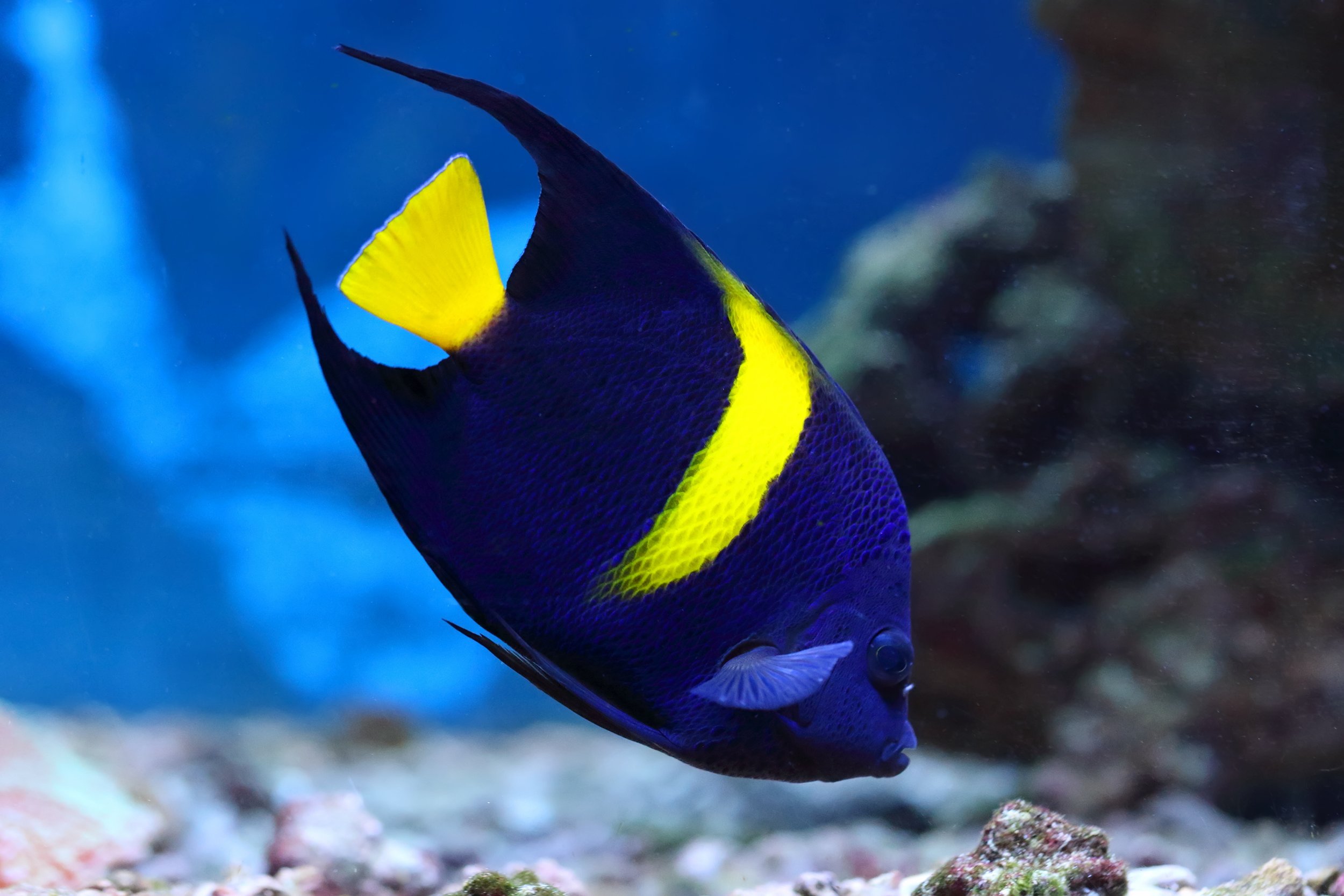 Image 1 of
Image 1 of


Asfur Angelfish 6" - Sold Out
The Asfur Angelfish (Pomacanthus asfur), also known as the Arabian or Crescent Angelfish, is a striking species native to the Red Sea and Indo-Pacific. Its deep blue-purple body, bright yellow tail, and distinct yellow crescent make it visually unique, often mistaken for Pomacanthus maculosus. Juveniles display different coloration from adults.
This shy, yet territorial species thrives in large aquariums of at least 150 gallons, where ample hiding places and live rock are essential for grazing. While it may nip at stony and soft corals, it can coexist with small-polyped stony corals and certain hardy soft corals.
As a hermaphroditic species, males and females are visually indistinguishable, and breeding in captivity is quite challenging. In aquariums, the Asfur requires a varied diet of vegetables, meat, and angelfish-specific preparations that include sponge-based foods.
The Asfur Angelfish (Pomacanthus asfur), also known as the Arabian or Crescent Angelfish, is a striking species native to the Red Sea and Indo-Pacific. Its deep blue-purple body, bright yellow tail, and distinct yellow crescent make it visually unique, often mistaken for Pomacanthus maculosus. Juveniles display different coloration from adults.
This shy, yet territorial species thrives in large aquariums of at least 150 gallons, where ample hiding places and live rock are essential for grazing. While it may nip at stony and soft corals, it can coexist with small-polyped stony corals and certain hardy soft corals.
As a hermaphroditic species, males and females are visually indistinguishable, and breeding in captivity is quite challenging. In aquariums, the Asfur requires a varied diet of vegetables, meat, and angelfish-specific preparations that include sponge-based foods.
The Asfur Angelfish (Pomacanthus asfur), also known as the Arabian or Crescent Angelfish, is a striking species native to the Red Sea and Indo-Pacific. Its deep blue-purple body, bright yellow tail, and distinct yellow crescent make it visually unique, often mistaken for Pomacanthus maculosus. Juveniles display different coloration from adults.
This shy, yet territorial species thrives in large aquariums of at least 150 gallons, where ample hiding places and live rock are essential for grazing. While it may nip at stony and soft corals, it can coexist with small-polyped stony corals and certain hardy soft corals.
As a hermaphroditic species, males and females are visually indistinguishable, and breeding in captivity is quite challenging. In aquariums, the Asfur requires a varied diet of vegetables, meat, and angelfish-specific preparations that include sponge-based foods.